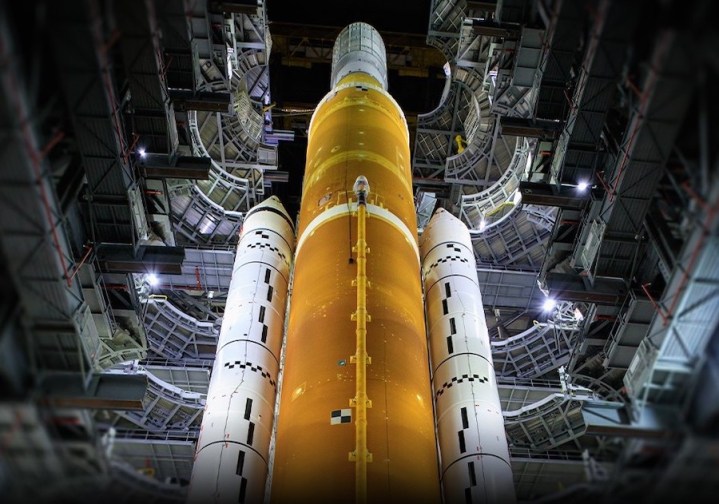
NASA says it’s on track for the late-August maiden launch of its next-generation lunar rocket and spacecraft for the Artemis I mission.
At a special briefing on Wednesday, August 3, officials at the space agency said final preparatory work on its rocket and spacecraft was going well. It means that barring any last-minute hiccups, the Space Launch System (SLS) rocket and Orion spacecraft will be rolled out to the launchpad at the Kennedy Space Center in Florida on August 11 for an August 29 liftoff.
NASA’s SLS rocket stands at 322 feet (98.1 meters) and is capable of creating around 8.8 million pounds of thrust at launch, 13% more than the space shuttle and 15% more than the Saturn V rocket that powered the Apollo lunar missions five decades ago.
Highlighting the level of excitement surrounding a mission that will see NASA’s most powerful rocket ever blast skyward, Florida news outlets are reporting that an estimated 100,000 people will line the Space Coast to view the launch later this month. One local hotelier commented: “That is a pretty big number, that’s the biggest number I’ve heard in years.”
The Artemis I mission will see the SLS rocket send a crewless Orion spacecraft on a flyby of the moon before returning home on October 10 when it will splash down in the Pacific Ocean off the coast of California.
A successful Artemis I mission will pave the way for Artemis II, which will send Orion on the same route but this time with astronauts on board. After that, Artemis III will put the first woman and first person of color on the lunar surface, possibly as early as 2025.
NASA’s ambitious Artemis program ushers in a new era of crewed space exploration that includes grand plans for a lunar space station, a permanent moon base for visiting astronauts on long-duration missions, and, in the late 2030s, crewed missions to Mars.
Editors' Recommendations
- Watch NASA begin testing its Orion capsule for lunar flyby
- NASA astronauts need good weather for Crew-8 launch. Here’s how it’s looking
- Five rocket launches to look out for in 2024
- Watch NASA’s trailer teasing next week’s launch of streaming service
- NASA eyes weather for Friday’s Crew-7 launch. Here’s how it’s looking


